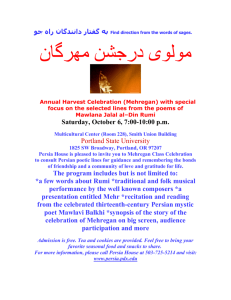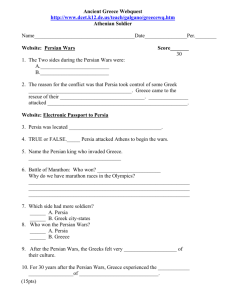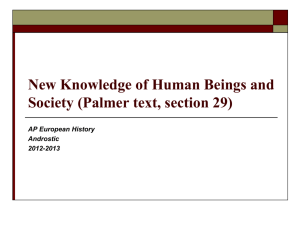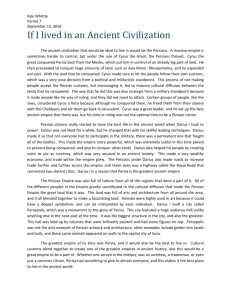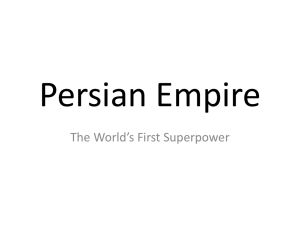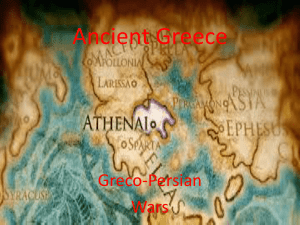What was life like for men and women in Ancient Persia?
advertisement
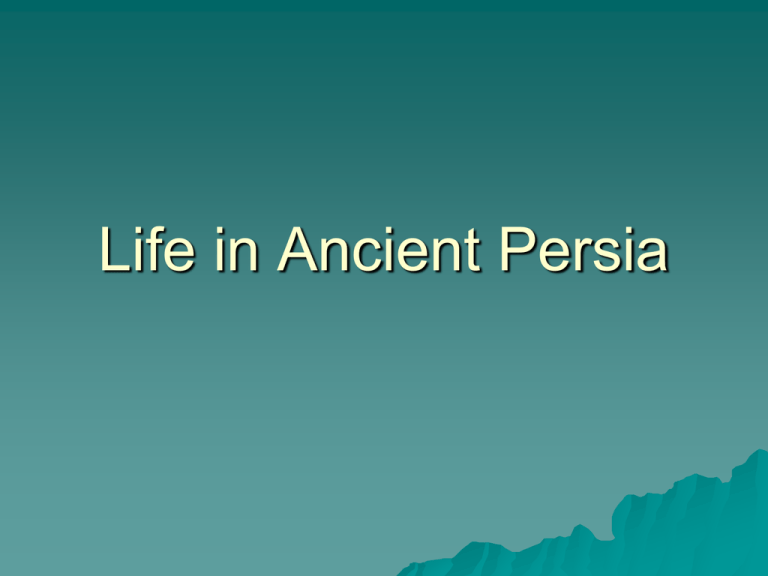
Life in Ancient Persia Key Questions What was the family law in Ancient Persia? Where did people live in Ancient Persia? What was the role of women in Ancient Persia? Family Law in Ancient Persia Structure of the Persian family Master of the household = Father and this was seconded by his wife. Members of the family were bound by a highly developed set of legal prescriptions. There were established rules and restrictions. Rights and obligations within the household The master of the household was to support his wife as long as she lived, his daughters until they married and his sons until they come of age. After the death of the master, the most authoritative member of the family was guardian (stur) who was responsible for the care of women and the protection of minors. If a stur was not appointed it was the duty of the citizens to care for the family. Persian homes Where did people live in Ancient Persia? The Persians were nomadic people and so at the beginning of the Achaemenid period, many still followed their traditional way of life and lived in tents made from animal skins and would be transported by horse, donkey or camel. Access to raw materials and weather patterns encouraged Persians to adopt and adapt the styles of buildings to that of their middle eastern neighbours. Raw materials used for building included: brick, stone and timber Bitumen occurs in the Middle and Near East in Iran and is only available in this region. It was used as an adhesive and helped to bind bricks. During the Achaemenid empire, houses were two storey, rectangular structure divided into two or more separate living quarters. Access to the top floor could be via stairs or a ladder. This housed one or more extended families in separate living quarters. It would be constructed of unbaked mud bricks, possibly on a foundation of fired bricks or stone. The roof consisted of whole and split timber beams covered with reed matting, a layer of lime and then a thick layer of mud. Persian homes are characterised by the inclusion of landscaped courtyards and high stone or brick walls surrounding the homes. Rose gardens, shade trees or food crops, such as citrus or pistachio trees would be a common inclusion. Water, ponds and fountains were also a Persian feature. Women in Ancient Persia What was the role of women in Ancient Persia? Had a high level of socio-economic status Made up over 60% of the population They were powerful women Women had to be obedient to their husbands and lord and master but this did not result in a loss of individuality or personality. Women were described in three different terms – mutu, irti and duksis Mutu = ordinary non –royal women Irti = unmarried members of the royal family Duksis = married women of royalty Women of the royal household travelled extensively and often administered their estates. The Queen and her ladies in waiting played polo against the emperor and his courtiers. Non-royals and ordinary women received rations depending on their skill and level of responsibility in the workplace. The highest ranking female worker was called arashshara (great chief). They were employed in different areas and managed large groups of women and children and sometimes men. They received high rations of wine and grain exceeding even the males in their group. Pregnant women also received higher rations as did women with newborn children for one month after the birth. It is rumoured that Cyrus the Great established the custom of covering women to protect their chastity. The veil was passed down through the ages. Discussion What do you think about the role of women in Persian society?

